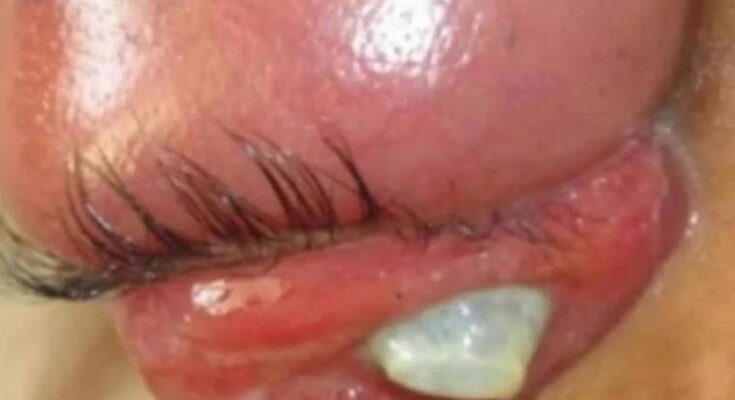If you have pink eye
If you have pink eye, you can help limit its spread to other people by following these steps.
Wash hands often
- Wash your hands often with soap and water for at least 20 seconds.
- Wash your hands before and after cleaning, or applying eye drops or ointment to your infected eye.
- If soap and water are not available, use an alcohol-based hand sanitizer that contains at least 60% alcohol to clean hands.
Keep your eyes clean
- Avoid touching or rubbing your eyes with your fingers.
- With clean hands, wash any discharge from around your eyes several times a day using a clean, wet washcloth or fresh cotton ball.
- Throw away cotton balls after use.
- Wash used washcloths with hot water and detergent, then wash your hands again with soap and warm water.
- Do not use the same eye drop bottle for your infected and non-infected eyes.
- Clean eyeglasses, being careful not to contaminate shared items like hand towels.
Use and clean contact lenses properly
- Stop wearing contact lenses until you no longer have symptoms, or your eye doctor says it’s ok to start wearing them again.
- Clean, store, and replace your contact lenses as instructed by your eye doctor.
- Throw away disposable products that you used while your eyes were infected, including disposable contact lenses and cases.
- Clean reusable products as directed, including extended wear lenses, eyeglasses, and cases.
Reduce the risk of spreading to others
- Wash pillowcases, sheets, washcloths, and towels often in hot water and detergent. Wash your hands after handling such items.
- Do not share personal items, like pillows, washcloths, towels, eye drops, eye or face makeup, makeup brushes, contact lenses, contact lens cases, or eyeglasses.
- Do not use swimming pools.
If you are around someone with pink eye
If you are around someone with pink eye, protect yourself from pink eye by following these steps.
Wash hands often
- Wash your hands with soap and water for at least 20 seconds
- If soap and water are not available, use an alcohol-based hand sanitizer that contains at least 60% alcohol.
- Wash your hands after contact with an infected person or items they use.
- For example, wash your hands after applying eye drops or ointment to an infected person’s eye, or after putting their bed linens in the washing machine.
- Do not touch your eyes with unwashed hands.
Do NOT share items used by them
- Pillows, pillowcases, washcloths, towels
- Personal items like eye drops, eye or face makeup, makeup brushes
- Eyewear like contact lenses, contact lens storage cases, or eyeglasses
-
Maybe your eyes are itchy and they’re starting to turn a shade of pink. Could it be an infection, you wonder? Your doctor can make the final call, but there are key signs to watch for that can give you clues. An infection in your eye can show up in many different ways. A lot depends on which part of your eye has the problem. For instance, you can get symptoms in your:
- Eyelid
- Cornea (clear surface that covers the outside of your iris)
- Conjunctiva (thin, moist area that covers the inside of the eyelids and outer white part of your eye)
Symptoms of an Eye Infection
You may have symptoms in one or both eyes when you have an infection. Look out for this kind of trouble:
How your eye feels. You may notice problems like:
How your eye looks. You could have changes like: - Discharge out of one or both eyes that’s yellow, green, or clear
- Pink color in the “whites” of your eyes
- Swollen, red, or purple eyelids
- Crusty lashes and lids, especially in the morning
How well you see. You may find you have blurry vision.
Some other problems you may get are fever, trouble wearing contacts, and swollen lymph nodes near your ear.
Types of Eye Infections
After you see your doctor, they may name the infection you have. You may hear them use medical terms like:
Pinkeye (conjunctivitis). It’s an infection of your conjunctiva and usually gives your eyes a pink tint. It can be caused by a bacteria or virus, although sometimes you might get it from an allergic reaction or irritants. It’s common to get pinkeye when you have a cold. In adults, it is most commonly caused by a virus, and in children it is most likely bacterial.
Keratitis. This is an inflammation of your cornea that can be caused by bacteria, viruses, or parasites in water. It’s a common problem for people who wear contact lenses. Stye. It can crop up as painful red bumps under your eyelid or at the base of your eyelashes. You get them when the oil glands in your eyelid or eyelashes get infected with bacteria. These are similar to a pimple, and are not contagious.
Fungal eye infections. It’s rare to get infections from a fungus, but they can be serious if you do. Many fungal eye infections happen after an eye injury, especially if your eye was scraped by something from a plant, like a stick or a thorn. You can also get one if you wear contacts and don’t clean them properly.
Uveitis. This is an inflammation of the middle layer of your eye, called the uvea. It can be caused by certain viruses like herpes, but is more commonly linked to autoimmune disorders such as rheumatoid arthritis or lupus.
Before deciding on the best treatment for your infection, your doctor will need to look at your eye and may also take a tissue or fluid sample. They’ll send it to a lab, where it gets checked under a microscope or put into a dish to make a culture. Based on what the lab finds, your doctor may prescribe medication you take by mouth, a cream you spread on your eyelid and eye, or eyedrops. If the infection is due to an injury, allergy, irritant, or other health condition, they may suggest other treatments to deal with those issues. You shouldn’t wear contact lenses until your eye infection has cleared up.



